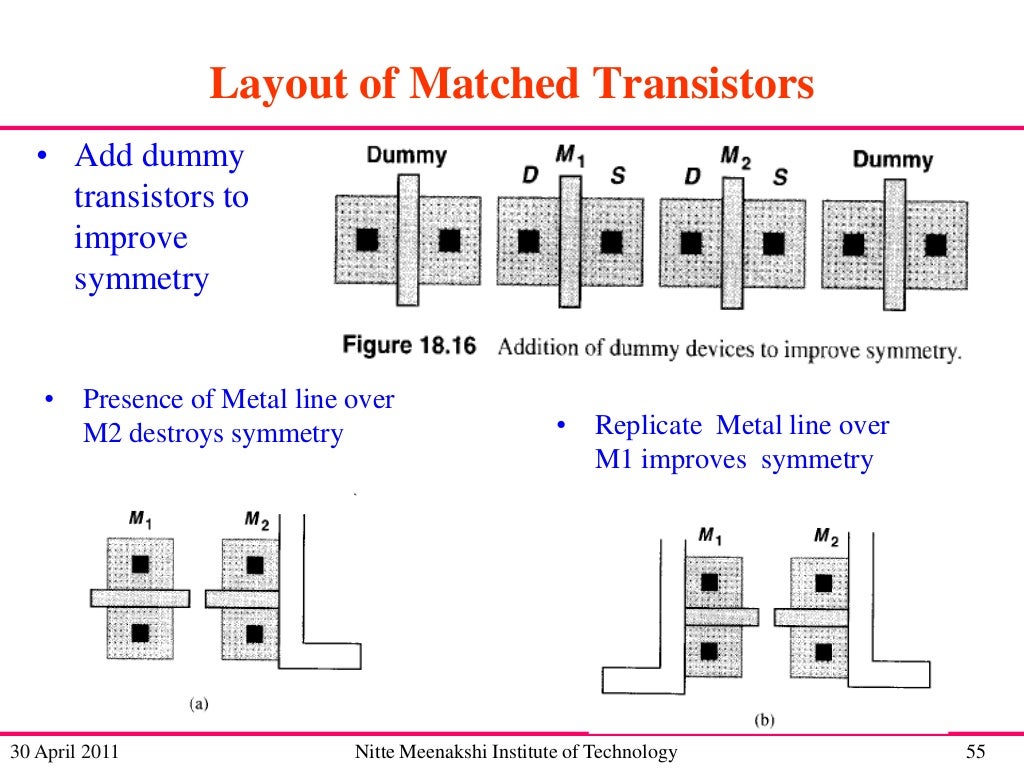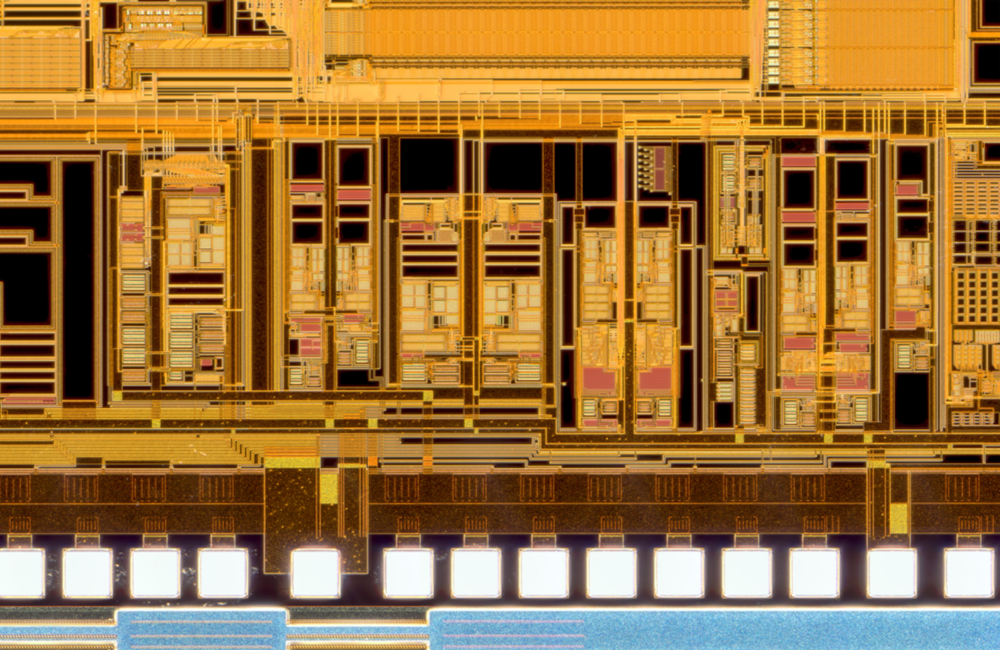Analog Dialogue Technical Journal
Table Of Content

This course provides a comprehensive introduction to various aspects of modern digital integrated circuit design. Navigate through the maze of tools, technologies and techniques including circuit components, component variations and practical design paradigms. Learn how to analyze, simulate and design a complementary metal oxide semiconductor (CMOS) analog integrated circuit. Analyze and simulate elementary transistor stages, current mirrors, supply- and temperature-independent bias and reference circuits. When the term “integrated circuit design” is mentioned, most people think of the design of complex microprocessors.
Working with Power Supply Design Tools
Simulation is an important step of electronic design, although it is sometimes neglected by engineers. Using simulations, one can tune the component values, adjusting them to achieve optimum performance. Also, different component models can be tested without needing to recalculate the model equations.
Multiplexer (MUX) and Demultiplexer (DEMUX) Applications
This variability manifests as changes in operating voltage, operating temperature, and in performance. Densely packed devices can also interact with each other and with the silicon substrate, package, and board to cause signal distortions. All of these effects can occur between devices and within a single IC as well. Because analog design requires both intuition and rigor, each concept is first introduced from an intuitive perspective and subsequently treated by careful analysis.
Digital-to-digital converter (DAC) circuits

The split ground plane helps ensure the signal integrity between analog and digital circuits doesn’t overly compromise one another through coupling. Because ground is ground, there must be at least one point where the analog ground (AGND) and digital (DGND) must be tied together. Often, this occurs directly at the component(s) in question by routing a short and direct trace between the pins. However, designers may want to avoid creating a single point that could lead to overly circuitous return paths. What is the best option for designers at this juncture, where seemingly contradictory best practices have to be reconciled?
Current sensing
Design of robust analog integrated circuit based on process corner performance variability minimization - ScienceDirect.com
Design of robust analog integrated circuit based on process corner performance variability minimization.
Posted: Sat, 28 Oct 2023 20:35:14 GMT [source]
This course is different from the ESD course on Udemy in that the material has been condensed into five 20-minute lessons and a new lesson on simulation of ESD clamps using a SPICE-like simulator. Also, the regenerative mechanism for the snapback phenomenon has been identified to help understand how a snapback clamp works. In addition, this course has the two laboratories above which give the student the opportunity to experience the simulation of ESD performance of circuits containing snapback clamps.
Besides frequency and gain, we also established the amount of ripple of the filter. Using this information, one can apply the model equations to figure out the component values. However, this process can be very onerous for complex systems, due to the number of variables and the non-linearity of the equations. Fortunately, for popular circuits, several automatic design tools are available. For instance, the Webench Filter Design Tool, from Texas Instruments™, can output an entire filter design based on the specifications. Using our project requirements, the circuit showed in Figure 9 was generated, as well as a bill of material (BOM) list containing each component value and tolerance.
Analog circuit simulation is a powerful tool that allows the designer to further tune the component values of a schematic before needing to design the layout, which reduces engineering time and work. Finally, layout tools are used to design the printed circuit board (PCB), where the designer can define the component distribution, the routing paths, the number of layers, the vias, the paths, etc. The combination between the schematic, simulation and layout software should be selected wisely, to optimize the design flow. Cost should also be considered, as many design tools are considerably expensive for the average consumer.
Check out more analog articles and ebooks from Bob Pease - Electronic Design
Check out more analog articles and ebooks from Bob Pease.
Posted: Tue, 17 Oct 2023 07:00:00 GMT [source]
An op-amp is comprised of an inverting and noninverting input, a positive and negative power rail, and output. Inside the op-amp exists a gain factor, which is a ratio of the output voltage over the input voltage. In an idealized model, the gain is assumed to be infinite; for practical modeling, the gain is provided by the datasheet and helps establish the minimum threshold for boosting the voltage. By running the inverting input to ground through a pulldown resistor and providing a positive or negative voltage on the noninverting input, the voltage is amplified by the gain.
The central difference between analog and digital circuitry comes down to the way information is conveyed. An analog signal is continuous as opposed to the discrete high and low signals of a digital signal. Effectively, analog presents signals as they are, rather than a time-sampled representation. These signals represent a direct relationship between the parameters of the signal and whatever is being measured or generated - the signal is analogous to some physical phenomenon. Altering the characteristics of the signal, such as the voltage or frequency, induces a change in the output, or vice versa.
This approach also enables the reader to apply the concepts to bipolar circuits with little additional effort. Analog signals arise from a direct interface with the physical world. As such, they perform an important function, representing some correlation between a device and its surrounding medium. This can often show up in PCBs as onboard sensors, where the analog output of the sensor can be fed to an analog-to-digital (ADC) converter for additional processing. There will be more on DACs and ADCs to follow, but the important point at this junction is that analog signals are ubiquitous with everything that exists outside the realm of digitized circuitry.
Simulation using a SPICE-like simulator is used to verify the clamp models. The second laboratory applies these ESD clamps to design, simulate, and verify the ESD input protection and output protection for an op amp. From the literature we know that second-order active filters can be implemented using the multiple-feedback topology, which requires only one OPAMP and several passive components (Figure 8). Now we need to define the OPAMP model and the value of the passive components. Further, methods exist for correcting this digital degradation that are simply unavailable to analog formats.
Digital design treats circuit stimulus as a series of discrete logic “ones” and logic “zeros” over time. A logic “one” is typically represented by the presence of the supply voltage for the IC and a logic “zero” is represented by the absence of this voltage (i.e., zero volts). The devices in digital circuits must spend most of their time at either logic “one” or logic “zero”. As long as the circuits processing these signals are consistent in their response to these logic levels, digital design works well.
As mentioned, packages may contain internal analog and digital circuits, making the unified ground a nonstarter. This also glosses over other circuit constraints - even when bypassing the split ground is possible, juggling the placement and routing concerns of the full design may make it highly impractical. First, consider what components and circuits comprise a typical analog board.
Simulation programs can then be used to predict the circuit outcome before testing, calculating the signal behavior both in time and frequency. Some popular simulation tools in the market are the PSpice, LTSpice, Tina-TI and Multisim. Most designers quickly learn that routing over a split plane gap is a cardinal sin of signal integrity due to the large current loops formed by the return path, which can quickly lead to formidable EMI emissions. Back-to-back Schottky diodes can be utilized to help protect against a large enough potential developing between the AGND and DGND pins to prevent damage to the circuit. Ferrite beads can also be useful to create a passage at low frequencies while becoming highly resistive and functioning as an open at high frequencies. This low pass filter behavior ensures that low-frequency analog signals can easily flow between the separate ground planes while confining high-speed digital signals to their respective ground plane.
The behavior of the circuit is modeled in the time and frequency domains with attention focused on the fidelity/precision, consistency, and performance of the resultant waveforms. Circuit variability, both manufacturing and design induced, must be modeled and compensated for as well. Each data converter circuit below includes step-by-step instructions with formulas allowing you to adapt the circuit to meet your unique design requirements. We've provided at least one recommended data converter for each circuit, but you can easily swap it with another device if you've found one that fits better with your design. Our circuits require a basic understanding of data converter concepts, so if you are new to data converter design, we highly recommend reviewing our TI Precision Labs (TIPL) training series. ADC and DAC were briefly touched on above, but hopefully, the reader has noticed the inseparability of digital and analog design.
Comments
Post a Comment